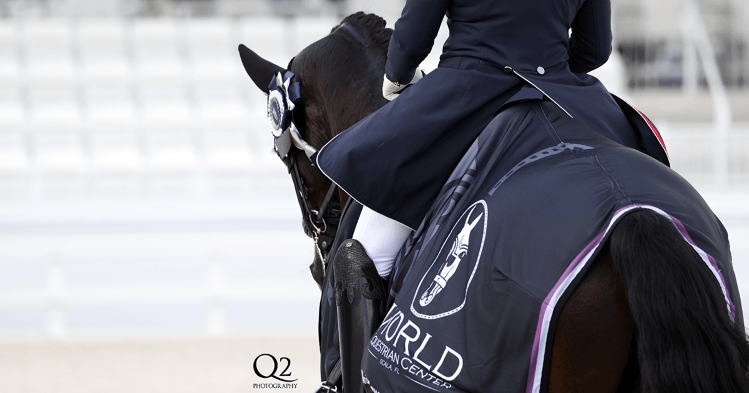There are seven national levels and five international levels in eventing offered by USEF and FEI, respectively. Eventing encompasses different levels of competition based on skill and experience.
From Beginner Novice to Advanced, each level presents unique challenges for equestrians and their horses. As competitors progress through the levels, the complexity and technical demands of the events increase, requiring a higher level of expertise and training. Understanding the distinctions between these levels is essential for participants and fans of this thrilling equestrian sport.
Whether you are new to eventing or a seasoned competitor, navigating the diverse levels of eventing is an exciting journey filled with growth and achievement.

National Competition Levels
Beginner Novice
Designed for those new to eventing, this level challenges riders with basic jumping and dressage tests.
Novice
Aspiring eventers move on to Novice, which introduces more complex courses and technical skills.
Training
Training level eventing requires riders to demonstrate proficiency in both dressage and jumping exercises.
Modified
A level between Training and Preliminary, Modified serves as a bridge for competitors advancing in their skills.
Preliminary
Preliminary level tests riders with challenging cross-country courses and precise dressage movements.
Intermediate
At the Intermediate level, riders showcase advanced skills in dressage, show jumping, and cross-country.
Advanced
The highest level in eventing, Advanced events are reserved for elite riders and demand exceptional horsemanship.
International Competition Levels
Eventing competitions consist of various levels, including national and international tiers. The international competition levels, governed by the Federation Equestre Internationale (FEI), are crucial for elite riders aiming to showcase their skills on a global platform.
Cci1
The CCI1 level is the entry point for international eventing competitors, testing their abilities in dressage, cross-country, and show jumping.
Cci2
As riders progress, they may advance to the CCI2 level, where challenges become more demanding, requiring increased precision and agility.
Cci3
Competitors at the CCI3 level face advanced courses designed to push their performance to higher standards in each discipline.
Cci4
At the prestigious CCI4 level, riders tackle top-tier international events, demonstrating exceptional horsemanship and competitive spirit.
Ccio
The CCIO level represents team competitions, where riders represent their countries in a display of skill, teamwork, and national pride.
Criteria For Each Level
Eventing consists of different levels, with national competitions operating under the USEF and international competitions under FEI. The levels range from Beginner Novice to Advanced, each requiring different skills and experience. The highest level is the four-star level, offered at select international competitions around the world.
Dressage
Dressage is the first phase in eventing and tests the horse’s obedience, suppleness, and precision of movements. Each level in eventing has specific criteria for dressage, which include the required movements, length of the test, and level of difficulty. The dressage portion of the competition is judged based on the horse’s flexibility, rhythm, and correctness of movements. A strong dressage performance sets the foundation for the rest of the event.
Cross Country
Cross Country is the second phase in eventing, where horse and rider navigate a course filled with natural obstacles such as fences, ditches, and water jumps. The course is designed to test the horse’s endurance, bravery, and jumping ability. Each level has its own set of criteria for cross country, including the number and height of the fences, the speed at which the course must be completed, and the technicality of the obstacles. Cross country requires courage, trust, and accuracy from both horse and rider.
Show Jumping
Show Jumping is the final phase in eventing, where horse and rider complete a course of fences in an arena. This phase tests the horse’s carefulness, scope, and agility. The show jumping course consists of a combination of verticals, oxers, and related distances, which require careful riding and accurate jumping. Each level has its own set of criteria for show jumping, including the height and technicality of the fences, the time allowed to complete the course, and the number of obstacles. Show jumping showcases the horse’s athleticism and obedience.


Frequently Asked Questions Of Levels In Eventing
How Many Levels Are There In Eventing?
There are seven national levels and five international levels in eventing competition. These are governed by the USEF and FEI respectively.
What Is The Lowest Level In Eventing?
The lowest level in eventing is the Beginner Novice level.
What Level Is 4 Star Eventing?
The 4-star level is the highest in eventing, found at prestigious global competitions like Badminton Horse Trials and Kentucky Three-Day Event.
What Are The Cci Levels In Eventing?
In eventing, there are seven national levels under the USEF and five international levels under FEI.
Conclusion
In eventing, there are seven levels of national competition and five levels of international competition. From Beginner Novice to Advanced, each level offers unique challenges and opportunities for competitors and horses alike. Whether you’re just starting out or aiming for the highest level of accomplishment, eventing caters to riders of all skill levels.
So, saddle up and embark on an exhilarating journey through the levels of eventing, where passion, dedication, and skill converge for an unforgettable equestrian experience.

